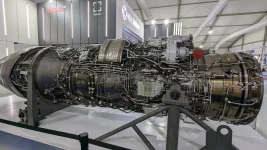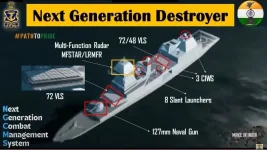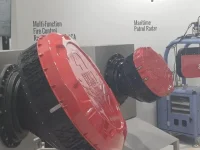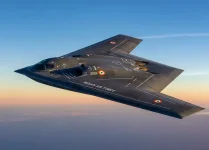- Views: 3K
- Replies: 9
A senior Indian delegation recently visited the Rolls-Royce facility in Bristol, UK, highlighting strengthening defence industry collaboration between India and the United Kingdom.
The delegation included India's Defence Secretary, Shri Rajesh Kumar Singh, and the High Commissioner of India to the UK, His Excellency Vikram Doraiswami, along with other high-ranking Ministry of Defence officials and industry leaders.
During the visit, the group examined Rolls-Royce's advanced capabilities in aircraft engines, naval propulsion systems, and other specialized technologies.
This high-profile visit has increased speculation regarding a potential partnership focused on India's ambitious Advanced Medium Combat Aircraft (AMCA) program. It serves as a clear indicator of the deepening strategic relationship between New Delhi and London in the defence sector.
The engagement is a key part of the broader India-UK defence relationship, which is guided by the bilateral Comprehensive Strategic Partnership and the 2030 Roadmap agreements. Both frameworks emphasize cooperation in defence and technology development.
Partnering with Rolls-Royce, a world leader in aerospace propulsion, supports India's goal of creating sophisticated platforms like the AMCA. The AMCA is envisioned as a fifth-generation stealth fighter jet, designed by the Defence Research and Development Organisation’s (DRDO) Aeronautical Development Agency (ADA), to significantly upgrade the Indian Air Force's (IAF) combat capabilities by the 2030s.
A critical requirement for the AMCA project is the development of a high-performance engine capable of meeting demanding specifications for stealth characteristics, sustained supersonic flight without afterburners (supercruise), and a high thrust-to-weight ratio.
India currently uses foreign engines, like the General Electric F414 powering the Tejas Mk2 fighter, underscoring the strategic need for either a domestically produced or jointly developed engine for future aircraft.
Rolls-Royce, known for engines such as the EJ200 (powering the Eurofighter Typhoon) and its involvement in the UK's next-generation Tempest fighter program, is seen as a strong potential collaborator for this vital AMCA component.
Publicly available information suggests the AMCA Mk2 variant will require an engine in the 110-130 kN thrust class.
During their tour of the Bristol site, the Indian delegation observed several cutting-edge technologies developed by Rolls-Royce. These included:
- Aero Engines: The company presented its latest turbofan engines, highlighting designs that offer high thrust, fuel efficiency, and suitability for stealth aircraft. Rolls-Royce's progress on adaptive cycle engine technology, which could potentially offer variable performance characteristics, is particularly relevant to the AMCA's advanced engine needs.
- Marine Propulsion Systems: The delegation also reviewed Rolls-Royce's naval technologies, including gas turbines and integrated electric propulsion systems. These could potentially be used in future Indian Navy projects, such as indigenous aircraft carriers and the planned Next Generation Destroyers (NGD).
- Niche Technologies: Discussions covered Rolls-Royce's expertise in areas like additive manufacturing (3D printing), artificial intelligence for predictive maintenance, and developments in sustainable aviation, including hydrogen propulsion concepts, which may have applications in both defence and civil aviation sectors in India.
Both nations affirmed their commitment to using their respective strengths – India's expanding defence industrial capacity and Rolls-Royce's technological leadership – to foster innovation and achieve shared economic advantages.
The visit reinforces the view that Rolls-Royce could be instrumental in resolving the engine challenge for the AMCA program.
While the initial AMCA Mk1 prototypes are expected to fly using the American GE F414 engine (rated around 98 kN thrust), the final production version, AMCA Mk2, requires a significantly more powerful engine (110-130 kN) to achieve its full fifth-generation potential.
India has been actively seeking international partners for co-development, with previous discussions involving both Rolls-Royce and Safran of France. This recent visit positions Rolls-Royce prominently in these ongoing considerations.




